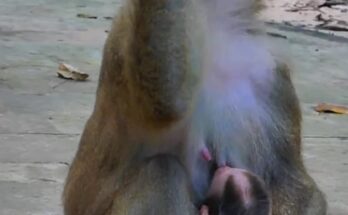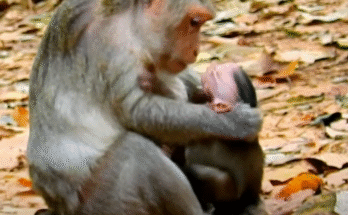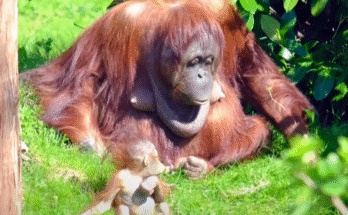The birth of a new baby gibbon is not just a cause for celebration among the animal care community; it is a beacon of hope for species conservation and biodiversity. These remarkable primates, known for their agility and enchanting songs, are critically endangered in many parts of the world. The arrival of a newborn gibbon offers a rare moment to reflect on the wonders of the natural world and the tireless efforts of conservationists working to protect it.
Gibbons, often called the “acrobats of the forest,” are small, tailless apes native to the dense rainforests of Southeast Asia. Their long arms and unique ball-and-socket wrist joints make them exceptional brachiators, allowing them to swing from tree to tree with incredible speed and grace. These arboreal creatures are also known for their complex vocalizations, often referred to as “songs.” These songs serve as a means of communication, strengthening pair bonds and marking territorial boundaries. However, deforestation, illegal wildlife trade, and habitat fragmentation have driven many gibbon species to the brink of extinction.
The birth of a baby gibbon, therefore, is a remarkable event, especially if it occurs within a conservation program or protected habitat. It signifies not only the survival of an individual but also the continuation of an entire lineage. This is particularly critical for species like the Hainan gibbon, which is considered the world’s rarest ape, with fewer than 40 individuals remaining in the wild.
In the case of this new arrival, the baby gibbon was born in a wildlife sanctuary dedicated to the preservation of endangered primates. Caretakers noticed the infant clinging tightly to its mother, an instinctive behavior essential for its survival. Gibbon mothers are fiercely protective, nursing and caring for their young for up to two years. The strong bond between mother and infant is crucial, as it allows the baby to learn essential survival skills, such as foraging and navigating the treetops.
Conservationists and zookeepers celebrated the baby’s arrival as a significant milestone. Breeding gibbons in captivity is challenging due to their complex social structures and selective mating behaviors. The success of this birth is a testament to the careful planning and dedication of the team responsible for the gibbon’s care. Advanced veterinary techniques, a carefully balanced diet, and an environment that mimics their natural habitat all contributed to the positive outcome.
The birth also highlights the importance of public awareness and support for conservation initiatives. Wildlife sanctuaries and zoos often use such occasions to educate visitors about the plight of endangered species and the steps needed to protect them. Fundraising campaigns, adoption programs, and interactive exhibits help foster a connection between the public and these magnificent creatures.
Looking forward, the baby gibbon represents a new chapter in the fight to preserve its species. Each small success reminds us that conservation is a collective effort requiring commitment from individuals, governments, and global organizations. As this tiny gibbon grows, swinging through the trees and joining its family in song, it carries with it the hopes of many—proof that, with care and effort, nature’s wonders can endure for generations to come.
In a world where many stories of wildlife involve loss, the birth of a baby gibbon is a refreshing reminder of resilience and renewal. It serves as an inspiration to continue the vital work of protecting the natural world.


